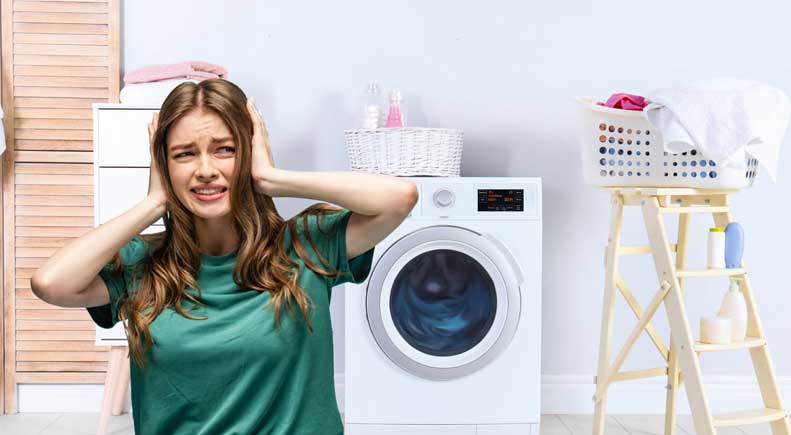
Any washing machine makes noise during operation, even a new machine that is installed according to all the rules and has no manufacturing defects. A certain level of noise is acceptable according to the laws of physics. However, the machine can make completely incomprehensible and loud sounds that are not typical for normal operation. Noise, rattling, knocking, or humming may occur when drawing water, during washing, rinsing or spinning. But in this article we will try to answer in detail the specific question, why does the machine hum when draining water?
There are several reasons why the washing machine hums and makes noise during operation. Most of them appear both during washing and during draining or spinning. What can cause a hum or noise when draining? Before the water begins to drain, the drain pump starts, so the main cause of the extraneous hum must be looked for in it. Experts say that humming and crackling may occur due to:
Finding and “cure” the cause of such a breakdown is not at all difficult. How to do this correctly and where is the best place to start? You should start with what is easiest to open, remove or unscrew. In our case, we need to start by inspecting the drain filter.
The drain filter in most washing machines is located in the lower right corner under the front panel of the case or behind a special door. The door opens easily, and you can use a flathead screwdriver to remove the panel. You need to insert it into the slot and carefully pry the panel so that the latches open. Next we proceed like this:
If the filter turns out to be almost clean, proceed to checking the following components. Namely the drain hose and pump. To inspect them, you need to disassemble the washing machine. In different car models, you have to get to the pump in different ways:
From the bottom of the machine, you can remove the drain pump in Whirlpool, Ariston, Samsung, Kandy, Ardo, Indesit, LG machines. In them, the bottom cover is missing or can be easily removed.
In general, the process is not difficult if you have detailed instructions. We offer such instructions with photographs in the article on cleaning the drain pump. If you understand how to clean the pump and can clear the impeller of debris yourself, then replacing the pump with a new one will not be difficult at all. Otherwise, only a master will help.
It remains to inspect the drain hose and pipes coming from the pump, because they too can become clogged or break. When the machine is disassembled and access to the pump is gained, you need to disconnect the clamp holding the pump and the drain hose. The second end of the drain hose is also disconnected from the branch sewer pipe. The hose removed from the machine must be washed and cleaned of settled debris and soap deposits.
To do this, you will need a special Kevlar cable with a ruff at the end. The diameter of the cable should not be more than 10mm. In addition, we choose a non-metal cable since the pipe can be damaged. Now we do this:
therefore,wing operating rules will help prevent the appearance of extraneous sounds, and therefore extend the life of individual components and the machine as a whole:
So, it is quite possible to eliminate the reasons that cause hum, crackling or noise in the washing machine when draining. We hope it has become clear to you why the machine may hum when draining water. In addition to the steps we described, watch a video on how to replace the drain pump.
Copyright © 2020 Coimbatore Service.